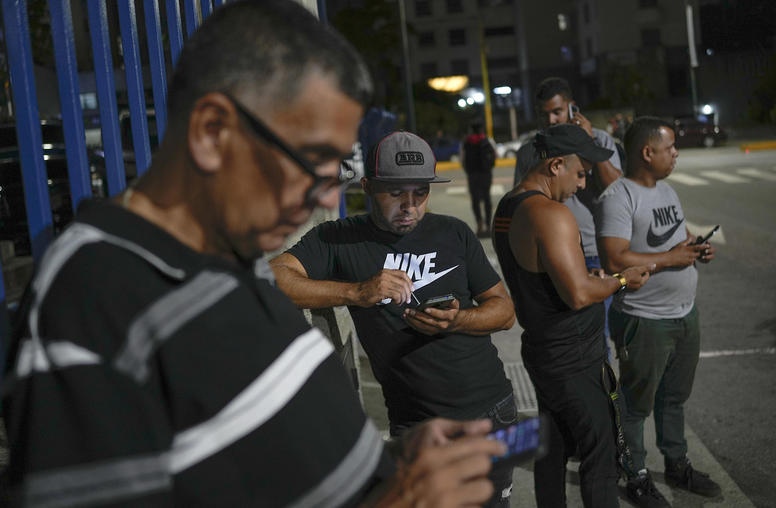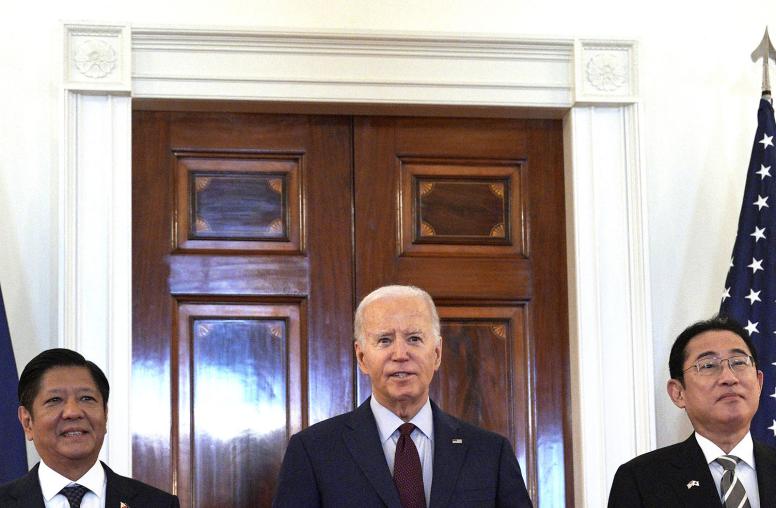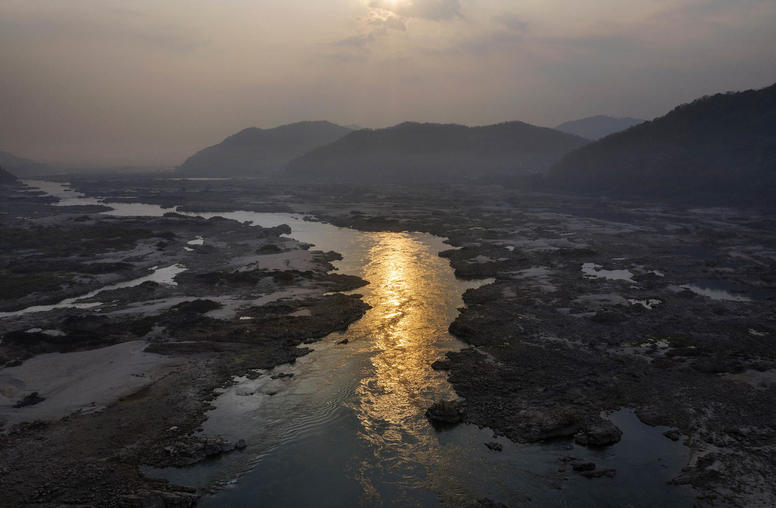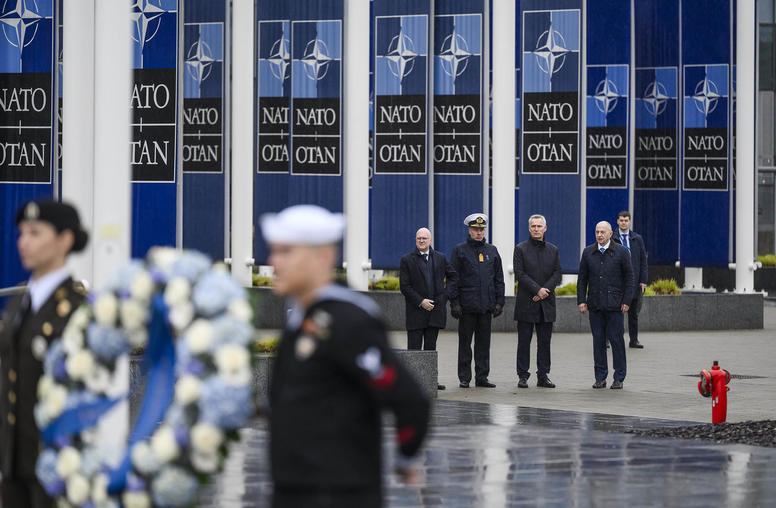China’s Troop Contributions to U.N. Peacekeeping
China, traditionally reluctant to intervene, has become a major contributor to UN peacekeeping operations. However, given its available assets, the country has the capacity to increase its commitments and play a key role in improving peacekeeping operations. This brief examines China’s rise as a global security provider and what can be done to drive its further engagement in the peacekeeping landscape.
Summary
- On average, China contributes more troops to United Nations (UN) peacekeeping missions than any other permanent member of the UN Security Council. The country dispatches high-value, hard-to-source enabler troops and has recently begun to provide combat troops, marking a significant change in its deployment profile.
- Like other countries, China’s decisions to deploy troops are motivated by its desire to protect national interests, gain operational experience, and secure a positive reputation and high status.
- China, typically reluctant to intervene, is a unique troop contributor in that it only engages in peacekeeping through the United Nations. So, when China dispatches troops, it sends a strong message that the international community is united and committed to act.
- UN officials recognize China for the quality and quantity of its deployed forces and welcome an increase in its support to UN peacekeeping.
- Both the United States and China should continue to cooperate on peacekeeping initiatives and deliver on their 2015 peacekeeping pledges.
- To increase China’s troop commitments, UN officials should continue to work closely with China to facilitate field learning and engage Chinese officers in senior roles at headquarters and on mission.
Introduction
2015 was a landmark year in China’s rise as a global security provider. Not only did President Xi Jinping commit 8,000 troops to the UN peacekeeping standby force—one fifth of the 40,000 total troops committed by fifty nations—China also pledged $100 million to the African Union standby force and $1 billion to establish the UN Peace and Development Trust Fund.1
China’s recent engagement is striking in light of its original disdain for peacekeeping. Until 1981, China abstained from voting on peacekeeping resolutions or contributing peacekeeping funds or personnel;2 and while China began to finance peacekeeping in 1982, for the next decade, it continued to abstain on most resolutions, so as to appear neutral to all parties. China sent its first cadre of peacekeeping personnel to Cambodia in 1992,3 while continuing to abstain on nonconsensual peacekeeping resolutions, such as those on the Rwandan genocide and ethnic cleansing in former Yugoslavia.4 China first voted for nonconsensual peacekeeping missions in then-East Timor in 1999,5 while gradually scaling up its overall troop deployment to the UN peacekeeping regime. Today, China is a fully engaged player in UN peacekeeping, voting on UN Security Council resolutions, drafting mandates, deploying troops to missions, and financing peacekeeping accounts. China is the second largest financier of peacekeeping budgets as of July 2016.6
China, known for its reluctance to intervene and support for autocratic regimes, is a unique troop contributor. Unlike other states that contribute to multiple platforms for peacekeeping (e.g., via ad hoc groups, regional organizations, or alliances), China only engages in peacekeeping through the United Nations. It is also the only member of the UN Security Council that has veto power while identifying itself as both a great power and a developing country. So, when China dispatches troops, it sends a strong message that the international community is united and committed to act.
Motivations
China’s decision to deploy troops to UN peacekeeping missions is motivated by myriad factors.7 UN peacekeeping can reduce the scale or spread of conflict by strengthening the rule of law and shoring up local security, thus helping to “protect the rightful interests of Chinese people and companies.”8 Peacekeeping is also an internationally acceptable platform through which armed forces can gain invaluable field experience, including how to effectively cooperate with the military of other countries. Lastly, peacekeeping contributions bolster China’s reputation and status as a cooperative global player, blunting criticism of its defense spending and confirming its profile as a responsible power in international affairs.9
Contributions
With the demand for peacekeeping continuing apace, and with peacekeepers facing increasingly difficult mandates, sustaining China’s level of troop contributions is vital. Staffing peacekeeping missions requires the consideration of various factors, such as geographic diversity, the amount and appropriateness of training received, and requisite field experience. The global pool of potential peacekeepers is surprisingly small—by some estimates, only 210,000 troops—with a handful of countries providing the majority of the 100,000 troops currently on mission.10 While China is often in the top ten of all contributors and commits the most troops out of all the permanent UN Security Council members, its 2,833 troops now spread across nine missions represent a fraction of the country’s armed forces.11 China’s two force commander posts further illustrate its leading role in peacekeeping and its potential to commit more assets.12
China traditionally deploys hard-to-source enabler troops—the medical teams, engineers, and logisticians that provide the backbone to a peacekeeping mission, supporting all other troops to carry out the mandate. These high-value assets are typically sparse in developing country military profiles and also cost more to maintain and train.13 Yet, missions would be inviable without them.
Departing from its usual UN peacekeeping profile, China dispatched comprehensive security forces to Mali in 2013 and a battalion of combat troops to South Sudan in 2014, under a clear civilian protection mandate. China is currently discussing the deployment of military helicopters, a new commitment that would help address a deficit in UN capabilities.14
Lessons Learned
China’s measured engagement in peacekeeping has paid dividends. Despite its initially tepid response, China increased its commitments once it identified peacekeeping as a strategic priority, building three training centers and seeking senior posts in the field and at headquarters before deploying troops in combat roles. China’s measured participation in UN peacekeeping helps maintain its largely positive record by assuring high-quality commitments; UN officials have repeatedly recognized China’s contributions and field performance.15 In turn, China’s role as a peacekeeping contributor helps it to effectively participate in UN Security Council actions, finance debates, and policy circles; it has the authority and legitimacy to negotiate based on field experience.
China has been able to reconcile competing bureaucratic interests in regard to peacekeeping. While the Ministry of Foreign Affairs needs to balance China’s global commitments and promote its status as a responsible power, the Ministry of National Defense has to confront the more pragmatic problems of meeting troop training and operational standards. For example, when the Ministry of National Defense officially announced that China would consider dispatching combat troops, it noted that decision makers would evaluate “the international community’s response, as well as our troop’s capability,”16 hinting at its reluctance to come up short on the mission. Though slow moving, China’s ability to satisfy sometimes contrasting bureaucratic goals is a sign of its maturity as a troop contributor.
However, China’s participation in peacekeeping missions has not uniformly helped its reputation. Its involvement has opened the country up to further criticism of its peace and development policies. Increases in troop contributions raise the expectation that China will further engage in the liberal international development and security landscape (e.g., reducing small arms and light weapons sales and supporting local democratic reforms). Critics chide China when it is perceived to be slow in meeting these norms or not doing enough given its expanded peacekeeping efforts.17
Moving Forward
China’s evolving stance on peacekeeping exemplifies its changing position on intervention more broadly. Remarkably, following three decades of deploying only enabler assets, China now deploys combat forces to fulfill a mandate on the nonconsensual protection of civilians.
To increase China’s troop levels, UN officials should continue to work closely with China to facilitate field learning, especially in the context of its new combat commitments. Officials should also consider Chinese officers for senior roles at headquarters and for force commander positions supporting nontraditional peacekeeping missions. Doing so would respond to China’s drive to be recognized for its steady troop commitments and further expose the country to the complexities of leading these types of missions.
China is also in a key position to assist the United Nations with implementing the 2015 recommendations of the High-Level Independent Panel on Peace Operations, which ultimately seek to improve the effectiveness of peacekeeping missions.18 China is already acting on some of the recommendations through bolstering rapid deployment capabilities and advocating political solutions to establish sustainable peace. Beyond these efforts, China could continue to support the pre-deployment training of national contingents, advocate realistic and attainable peacekeeping mandates, and align rules of engagement with the political environments found in-country.
Finally, peacekeeping continues to be a valuable platform for cooperation between the United States and China. At a minimum, the two countries should continue to act as partners in the peacekeeping effort and learn from each other’s experiences.19 In being a priority for both of them, UN peacekeeping provides an open line of bilateral communication and cooperation within a sometimes complicated U.S.-China relationship. The United States should continue to deliver on its 2015 peacekeeping pledges of manpower, logistical support, and UN capacity-building efforts,20 while recognizing China’s progress toward meeting its landmark commitments to UN and African Union peacekeeping.
Notes
- Michael Martina and David Brunnstrom, “China’s Xi Says to Commit 8,000 Troops for U.N. Peacekeeping Force,” Reuters, September 28, 2015, www.reuters.com/article/us-un-assembly-china-idUSKCN0RS1Z120150929.
- United Nations Security Council, Resolution 495 (1981), S/Res/495, December 14, 1981.
- United Nations Security Council, Resolution 745 (1992), S/Res/745, February 28, 1992.
- United Nations Security Council, Resolution 794 (1992), S/Res/794, December 3, 1992. China justified its yes vote by noting that Mogadishu no longer had a sitting government.
- United Nations Security Council, Resolution 1264 (1999), S/Res/1264, September 15, 1999; and United Nations Security Council, Resolution 1271 (1999), S/Res/1271, October 22, 1999.
- “China to Replace Japan as Second-Largest Funder of U.N. Peacekeeping,” Japan Times, December 22, 2015, www.japantimes.co.jp/news/2015/12/22/national/politics-diplomacy/china-replace-japan-second-largest-funder-u-n-peacekeeping/#.VzBiCBV97Vq.
- Courtney J. Fung, “What Explains China’s Deployment to UN Peacekeeping Operations?” International Relations of the Asia-Pacific (2015), doi: 10.1093/irap/lcv020.
- Shan Huang, “A Decade of China’s Peacekeeping Missions,” China.org.cn, January 18, 2010, www.china.org.cn/world/haitiquake/2010-01/18/content_19262239.htm; Laura Neack, “UN Peace-Keeping: In the Interest of Community or Self?” Journal of Peace Research 32, no. 2 (1995): 181–96; and Vincenzo Bove and Leonardo Elia, “Supplying Peace: Participation in and Troop Contribution to Peacekeeping Missions,” Journal of Peace Research 48, no. 6 (2011): 669–714.
- Courtney J. Richardson, “A Responsible Power? China and the UN Peacekeeping Regime,” International Peacekeeping 18, no. 3 (2011): 286–97; and Andrew Higgins, “China Showcasing its Softer Side: Growing Role in U.N. Peacekeeping Signals Desire to Project Image of Benign Power,” The Washington Post, December 2, 2009, www.washingtonpost.com/wp-dyn/content/article/2009/12/01/AR2009120104060.html.
- Donald C. F. Daniel, “Contemporary Patterns in Peace Operations, 2000–2010,” in Providing Peacekeepers: The Politics, Challenges, and Future of United Nations Peacekeeping Contributions, eds. Alex J. Bellamy and Paul D. Williams (Oxford: Oxford University Press, 2013), 25–46.
- In line with literature on peacekeeping, police contributions are considered a separate matter given their noninterventionist roles, emphasis on training, and different pathway to deployment. See United Nations Peacekeeping, “UN Mission’s Summary Detailed by Country: Month of Report: 30-Apr-16,” April 2016, www.un.org/en/peacekeeping/contributors/2016/apr16_3.pdf.
- United Nations Meetings Coverage and Press Releases, “Secretary-General Appoints Major General Zhao Jingmin of China as Force Commander for Western Sahara Mission,” SG/A1089 BIO/3918, August 28, 2007; and United Nations Meetings Coverage and Press Releases, “Secretary-General Appoints Major General Chao Liu of China to Head United Nations Peacekeeping Force in Cyprus,” SG/A/1276-BIO/4263-PKO/261, January 13, 2011.
- Countries volunteering personnel for peacekeeping operations are reimbursed at a UN standard rate of approximately US$1,330 per soldier per month. See United Nations Peacekeeping, “Financing Peacekeeping.”
- “The Blue Helmet: Lighting the Beacon of Peace—Intervention by H.E. Wang Yi Minister of Foreign Affairs of the People’s Republic of China at the High-Level Meeting on] UN Peacekeeping,” September 26, 2014, www.fmprc.gov.cn/mfa_eng/wjb_663304/wjbz_663308/2461_663310/t1195556.shtml.
- “China, UN Work on Building Peacekeeping Standby Force,” Xinhua, June 25, 2016, http://english.gov.cn/news/international_exchanges/2016/06/25/content_281475379588740.htm.
- Guangjin Cheng, “Chinese Combat Troops ‘Can Join UN Peacekeeping,’” China Daily, July 7, 2010, www.chinadaily.com.cn/china/2010-07/07/content_10073171.htm.
- Shannon Van Sant, “Analysts Weigh Role of Chinese Peacekeepers in S. Sudan,” Voice of America, April 20, 2015, www.voanews.com/content/china-peacekeepers-south-sudan-analysts/2728166.html.
- United Nations General Assembly and United Nations Security Council, Report of the High-Level Independent Panel on Peace Operations on Uniting Our Strengths for Peace: Politics, Partnership and People, A/70/95–S/2015/446, June 17, 2015.
- Jianing Yao, “U.S. Military Observers Visit Chinese Peacekeeping Infantry Battalion in South Sudan,” China Military Online, March 22, 2016, http://eng.mod.gov.cn/DefenseNews/2016-03/22/content_4647228.htm.
- The White House Office of the Press Secretary, “Remarks by President Obama at U.N. Peacekeeping Summit,” Press Release, September 28, 2015, www.whitehouse.gov/the-press-office/2015/09/28/remarks-president-obama-un-peacekeeping-summit.
About this Brief
Courtney J. Fung is an assistant professor of international relations in the Department of Politics and Public Administration at the University of Hong Kong. This brief examines the implications of China’s troop contributions to United Nations peacekeeping and the potential for its increased engagement.



